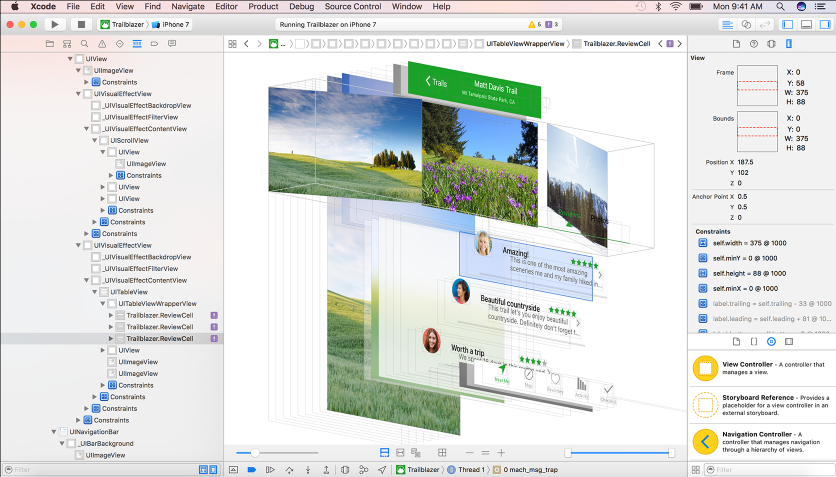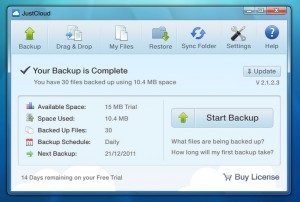40 linux list disk labels
disk - List all partition labels - Ask Ubuntu Simply labels? $ ls /dev/disk/by-label/ Download MuruHome Ubuntu Windows8 arch Or better: $ tree /dev/disk/by-label/ # or use ls -l /dev/disk/by-label/ ├── Download -> ../../sda6 ├── MuruHome -> ../../sdc2 ├── Ubuntu -> ../../sdc1 ├── Windows8 -> ../../sda2 └── arch -> ../../sda1 How to list disks, partitions and filesystems in Linux? There are many tools for that, for example fdisk -l or parted -l, but probably the most handy is lsblk (aka list block devices):. Example $ lsblk NAME MAJ:MIN RM SIZE RO TYPE MOUNTPOINT sda 8:0 0 238.5G 0 disk ├─sda1 8:1 0 200M 0 part /boot/efi ├─sda2 8:2 0 500M 0 part /boot └─sda3 8:3 0 237.8G 0 part ├─fedora-root 253:0 0 50G 0 lvm / ├─fedora-swap 253:1 0 2G 0 lvm [SWAP ...
How to change the disk label - Red Hat Customer Portal Learn about our open source products, services, and company. Get product support and knowledge from the open source experts. Read developer tutorials and download Red Hat software for cloud application development. Become a Red Hat partner and get support in building customer solutions.

Linux list disk labels
show all unmounted disk labels? - linuxquestions.org Some distros of Linux don't have the /dev/disk/by-label/ directory (mine doesn't) so that can't be used. fdisk -l doesn't show labels (at least it doesn't on mine). There are various tools that let you ask a drive what its label is (e2label, mlabel, ntfslabel, etc.) but they generally require that you know which device it is, which is often ... linuxhandbook.com › lvm-guideComplete Beginner's Guide to LVM in Linux [With Hands-on] May 18, 2021 · Now list the physical volumes attached to this volume group, just to be sure. sudo pvdisplay -S vgname=lvm_tutorial -C -o pv_name. Output:-[email protected]:~$ sudo pvdisplay -S vgname=lvm_tutorial -C -o pv_name PV /dev/sdc /dev/sdd1 /dev/sdd2 /dev/sdd2 is now in the list as expected. Reducing a volume group how to list all hard disks in linux from command line There are several different commands that you can use in a Linux environment to list disks that have been mounted on the system. df The df command is primarily intended to report file system disk space usage. It is still a good utility to print out the disks that are available to the system, although it prints filesystems rather than disks per se.
Linux list disk labels. How To List Disk Partitions In Linux - OSTechNix There are many ways to view disk partitions in Linux. First, we will start with lsblk command line utlity. 1. List disk partitions in Linux using lsblk command The lsblk utility is used to display information about a specified block device as well as all available block devices, along with their partitioning schemes in Linux. How to Change Linux Partition Label Names on EXT4 / EXT3 / EXT2 and Swap Below you can find listing of all such commands. 1. e2label or tune2fs The commands e2label or tune2fs used for changing label of ext2, ext3 and ext4 type partitions. # e2label /dev/sda1 ROOT OR # tune2fs -L ROOT_PART /dev/sda1 Here, ROOT and ROOT_PART are the labels to be added to /dev/sda1 which is ext4 formatted partition. 2. ntfslabel linux - How to get volume label based on device name using Python ... Python gio module has a class named VolumeMonitor. So getting the list with nice names and correct icons is simple as iterating through result of get_mounts () method: for mount in volume_monitor.get_mounts (): print mount.get_name (), mount.get_icon () You can also get a list of drives and volumes. You can also connect some signals and update ... LINUX - fdisk : how to label a partition? - Learn in 30 Sec from ... The following basic command list all existing disk partition on your system. The '-l' argument stand for (listing all partitions) is used with fdisk command to view all available partitions on Linux. The partitions are displayed by their device's names. For example: /dev/sda, /dev/sdb or /dev/sdc. Linux Code
linux - List partition labels from the command line - Unix & Linux ... 5. This will not list all partitions but you can view and alter what you like with tune2fs. $ sudo tune2fs -l /dev/sda1. You can use a command such as this to get all the /dev/sda* devices. $ sudo sh -c 'echo /dev/sda* /dev/mapper/fedora* | xargs -n 1 tune2fs -l'. Share. Improve this answer. How to name/label a partition or volume on Linux If you do not see any output produced by e2label command the label for the partition or volume is not yet set. To set a partition. volume label run: # e2label /dev/sda1 Boot OR # tune2fs -L Boot /dev/sda1. Both above commands will set partition label of /dev/sda1 block device to Boot. Please note that the maximum. cloud.google.com › compute › docsCreate a Linux VM instance in Compute Engine - Google Cloud Jun 07, 2022 · Create a Linux VM instance. In the Cloud console, go to the Create an instance page. Go to Create an instance. In the Boot disk section, click Change to begin configuring your boot disk. On the Public images tab, choose Ubuntu from the Operating system list. Choose Ubuntu 20.04 LTS from the Version list. Click Select. How to get disk partition UUID in Linux - Simplified Guide Universally Unique IDentifier or UUID is a random 128-bit value that can be generated and assigned to partitions or block devices. The partitions or block devices could then be identified using UUID instead of the normal device name such as /dev/sda1.You can then use the UUID to mount filesystem via /etc/fstab by specifying UUID value in a special block device (the first field).
Find UUID of Storage Devices in Linux Finding UUID with ls: In Linux, all the devices including the storage devices are represented as files. So, the partitions with UUID set are also represented as files. You can list all these files with the ls command. To list all the partitions and their UUIDs, run the following command: $ ls -l / dev / disk / by-uuid. How to List Disks in Linux Command Line - LinOxide In this tutorial, we learn how to list disks in Linux using the command line. 1. lsblk lsblk (list block devices) is used to list information of all available block devices, such as hard disk, and flash drives. Just typing the command lsblk will list all block devices in form of a tree format. This is the handy and simple way to list disks. $ lsblk Label a Linux Partition - nixCraft /boot Set a new label If the optional argument new-label is present, then e2label will set the filesystem label to be new-label. Ext2 filesystem labels can be at most 16 characters long; if new-label is longer than 16 characters, e2label will truncate it and print a warning message. To set a new label, enter: # e2label /dev/sdb2 usbstroage List Device Names, Disk and Partition Information in Linux with lsblk To see what extra columns lsblk can display, enter the following: lsblk --help. In this scenario you will use ROTA and DISC-GRAN. ROTA tells you if a block device belongs to a rotational storage device. Hard disks are rotational, so the column outputs "1" besides them (binary logical value meaning "true").
How to label disk in Linux with blkid Use the syntax below to add a label to any disk partition of your choosing. $ sudo e2label /dev/sda5 "MY_BACKUP" Another way to add a label is with the tune2fs command. The following syntax would be used to add a label to our /dev/sda5 partition. $ sudo tune2fs -L "MY_BACKUP" /dev/sda5
Three applications for making disc labels - Linux.com gLabels allows you to print both CD booklets and labels for the discs themselves. The inclusion of paper templates and the ability to fairly quickly make your own, guided by a well designed wizard, is a wonderful feature. Kover's interface lets you make a jewel case quickly, though for more involved designs you might like to use gLabels.
[SOLVED] Unrecognised disk label - gparted The key was to first install dcfldd. Code: sudo apt-get install dcfldd. Code: # dcfldd if=/dev/zero of=/dev/sdc bs=1M. Remove and reinsert USB drive. Code: # cmp /dev/zero /dev/sdc. The cmp will fail at the point when it has reached the end of your drive (14.6GB) hopefully.
How to find Linux filesystem by Label or UUID using findfs, lsblk ... Linux includes by default a bunch of useful filesystem tools that can be used to locate filesystems or partitions with specified tags or display the whole list of block devices along with their labels, universally unique identifiers (UUIDs) or default mount points.
8 Linux 'Parted' Commands to Create, Resize and Rescue Disk ... - Tecmint Show Current Linux Disk. As shown on the above image, we are using a virtual drive of 34 GB. First we will give the new disk a label and then create a partition and set a file system on it. Now the first step is to give the new disk a label name with: (parted) mklabel msdos Now create the new partition with mkpart.
6 Different Ways to List Disks in Linux Command Line 1. df The df command in Linux is probably one of the most commonly used. It lists the actual "disk space usage" and it can give you information about what hard disks (or current disk space) is being used in the entire system. The most common way to use it is with the -h argument which means "human readable" (because we are not machines, right?):
wiki.archlinux.org › title › ZFSZFS - ArchWiki - Arch Linux Disk labels and UUID can also be used for ZFS mounts by using GPT partitions. ZFS drives have labels but Linux is unable to read them at boot. Unlike MBR partitions, GPT partitions directly support both UUID and labels independent of the format inside the partition. Partitioning rather than using the whole disk for ZFS offers two additional ...
Linux blkid Command to Find Block Devices Details - LinOxide In this tutorial we learn about blkid command in Linux and how to use it to find UUIDs. blkid usage Simply running blkid without any argument will list all the available devices with their Universally Unique Identifier (UUID), the TYPE of the file-system and the LABEL if it's set.
Labels - Linux Documentation Project Labels are not mandatory for a linux volume. Each can be a maximum of 16 characters long. There are three tools to make volume labels: mke2fs, tune2fs and e2label. 6.1.1. Simple Invocation. e2label /dev/hdb1 pubsw. tune2fs -L pubsw /dev/hdb1. Either of thse two commands will label the first partition of the second drive "pubsw".
4 Ways to Show all Drives (Mounted and Unmounted) on Linux Display all Drives on Linux. To display all of your drives on a Linux system, you can perform any of the following four methods: Method # 1: Using the "fdisk" Command. The "fdisk" command can be used to display the drives in Linux in the manner shown below: $ sudo fdisk -l. The output produced by this command is shown in the following ...
devconnected.com › monitoring-disk-i-o-on-linuxMonitoring Disk I/O on Linux with the Node Exporter Jun 03, 2019 · On Linux systems, disk I/O metrics can be monitored from reading a few files on your filesystem. Remember the old adage : “On Linux, everything is a file“? Well it could not be more true! If your disks or processes are files, there are files that store the metrics associated to it at a given point in time. A complete procfs tour
How To - Linux List Disk Partitions Command - nixCraft lsblk Command to list block device on Linux To list all block devices, run the lsblk command: $ sudo lsblk $ sudo lsblk /dev/DEVICE $ sudo lsblk /dev/sda $ sudo lsblk -l # use the grep command /egerp command to filter out info # $ sudo lsblk -d | grep disk
Mounting Partitions Using UUID and LABEL on Linux LABEL on the other hand is a short name that you can put it when you format a partition to identify the disk. Many people can use the same LABEL. So, the uniqueness of LABEL depends on how creative you are at naming your partitions. In this article, I will show you how to mount partitions using UUID and LABEL using the /etc/fstab file on Linux ...
Getting disk label in Linux in C/C++ - Stack Overflow find -L /dev/disk/by-label -inum $ (stat -c %i /dev/sda1) -print That is, stat () the device file you care about and remember its inode number. Iterate over all of the files in /dev/disk/by-label, and stat () each of them. When the inode number matches, then the name of the matched file is the label of that disk.
how to list all hard disks in linux from command line There are several different commands that you can use in a Linux environment to list disks that have been mounted on the system. df The df command is primarily intended to report file system disk space usage. It is still a good utility to print out the disks that are available to the system, although it prints filesystems rather than disks per se.
linuxhandbook.com › lvm-guideComplete Beginner's Guide to LVM in Linux [With Hands-on] May 18, 2021 · Now list the physical volumes attached to this volume group, just to be sure. sudo pvdisplay -S vgname=lvm_tutorial -C -o pv_name. Output:-[email protected]:~$ sudo pvdisplay -S vgname=lvm_tutorial -C -o pv_name PV /dev/sdc /dev/sdd1 /dev/sdd2 /dev/sdd2 is now in the list as expected. Reducing a volume group











Post a Comment for "40 linux list disk labels"